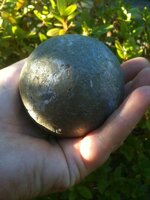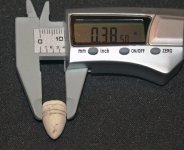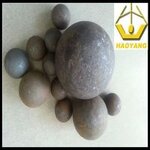Satellite45
Greenie
- Jul 3, 2013
- 12
- 0
I found this round ball about two feet deep while digging a hole... I live in Coastal Washington State so my first thought was a lead fishing weight (weighs 5lbs) but there aren't holes or indentations... Feels dense, but is softer than steel... So I thought it may be lead... It fits in the palm of my hand...










